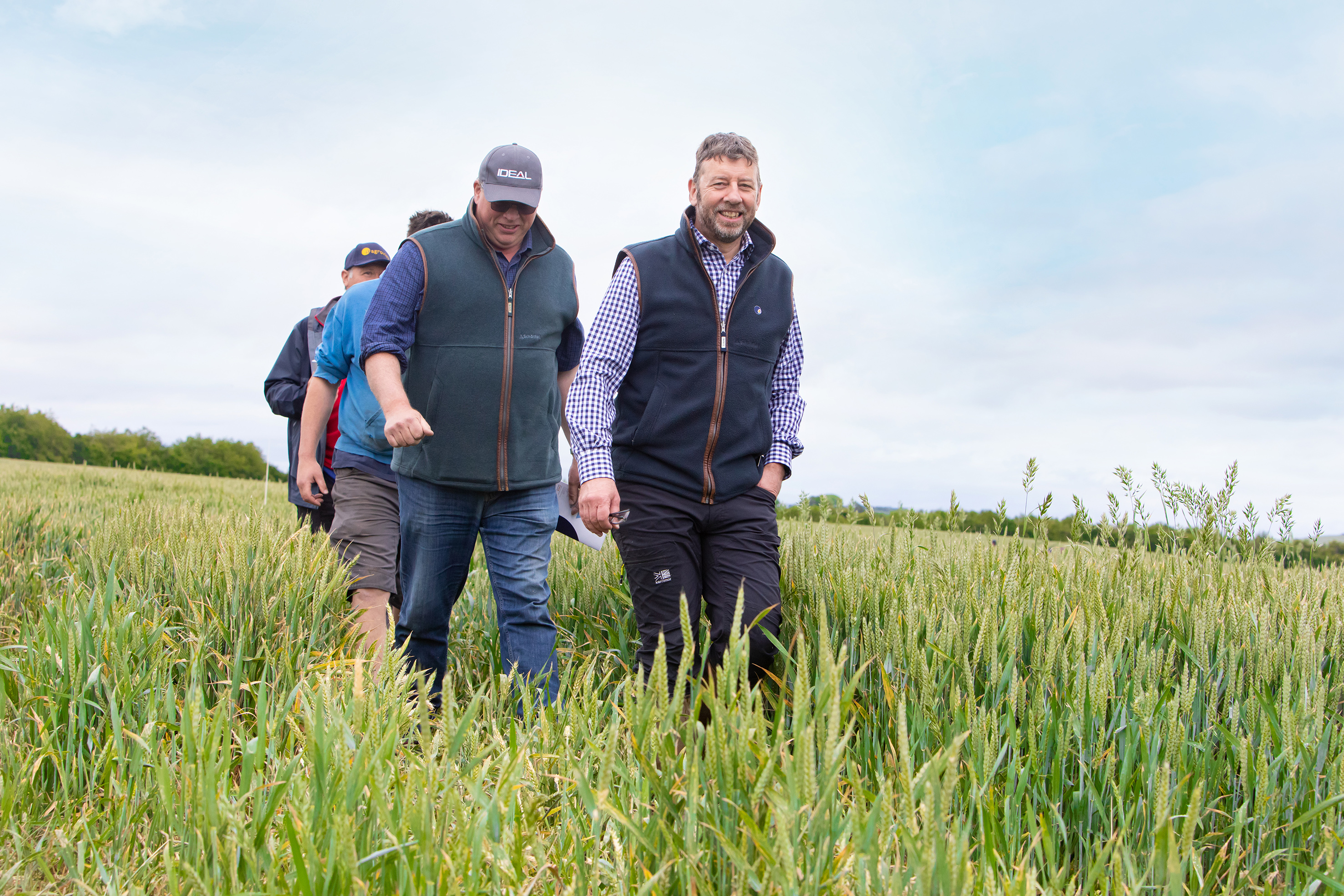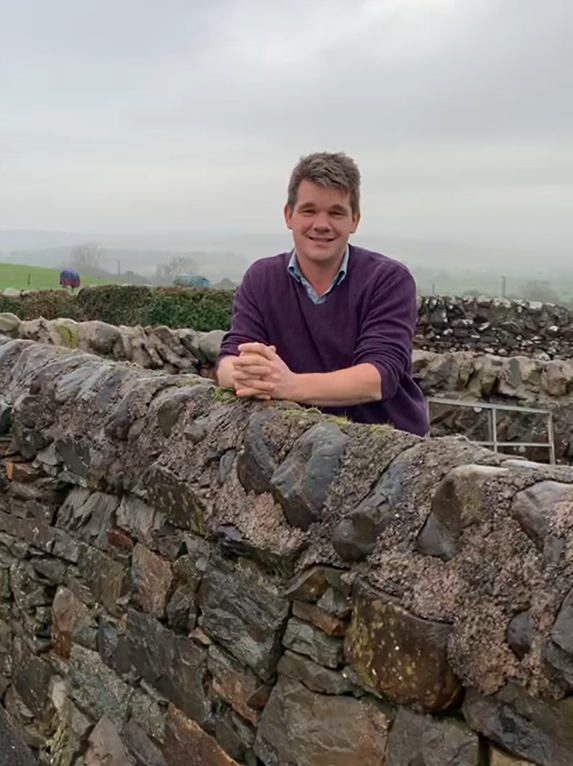After more than 37 years with Agrovista, Jonathan Cahalin, regional sales manager for Scotland, brought his career to a close at the end of March.
Jonathan has been an integral part of Agrovista’s evolution and growth throughout his time with the company and is held in high regard by farmer customers and partner businesses across Scotland and beyond.
Jan Vos, Agrovista’s area sales manager for the West of Scotland and the Borders, will take on Jonathan’s role. He has worked alongside Jonathan over the past year, which will result in a seamless transition.
We asked Jonathan to share some of his observations and memories amassed during his long spell with Agrovista, and the result is a fascinating potted history of the many changes that agriculture has gone through during that time.
We also asked Jan what he was looking forward to in his new role, and how he thought it might evolve over the coming years.
Jonathan Q & As
Looking back at your time with Agrovista, what are the biggest changes you've seen in the agricultural industry?
The move from plough-based establishment to min-till/no-till has been a transformation for many growers and the agronomy sector generally. I would also include the growth of contract farming and inflation, particularly in machinery costs. One of the most important changes for my particular sector is the loss of active ingredients.
What have been some of the most rewarding moments in your career?
I have really enjoyed employing young people as raw talent and helping and observing their development within Agrovista and in the wider agricultural industry.
I’m also very proud of playing my part in developing a business in Scotland over the past 30 years from fairly humble beginnings to something much more substantial.
How has Agrovista evolved over the years, and what role do you think it plays in modern agriculture today?
There is no doubt that Agrovista is a different company today to the one I joined in 1987 when it was Schering Agriculture, a manufacturer of agrochemicals.
We were hived off as Profarma, a distributor dealing directly with farmers, around 1998, A couple of years afterwards, Agrovista was born.
We had the benefit of setting up a new company to be so much more than an agchem distributor. We had a clear focus on trials and technical development driving our decision making, product choice and advice to our customers. This is still true today.
We initially totally focused on crop protection but the depth and breadth of trials over the past 25 years is quite astounding. They now include cultural control, application techniques, seed varieties, precision farming, cover crops, soils and nutrition, to name but a few.
In my time, I’ve seen Agrovista develop a strategy of diversifying into areas that complement the initial core business of crop protection, such as precision farming, seed, rural consultancy, nutrition and bioscience products.
What innovations or technologies have had the biggest impact on farming and agronomy during your career?
Precision application of fertiliser and seed must up near the top.
So is seed breeding, particularly in Scotland over the past five years. Spring barley yields have improved and remained consistently higher, through the introduction of varieties like Laureate and Diablo.
I would also list the introduction of bioscience products that influence plant physiology, improving yield, grain quality and by sometimes saving money in other areas, for example on bagged fertiliser.
What advice would you give to young professionals looking to build a career in agriculture?
Go for it! The opportunity to develop a career in agronomy is still as strong as ever. The need for advice is only going to grow as governments require farmers to change the way they produce crops and access payments and grants.
This is a fast-moving industry, with technology now firmly at the centre of pretty much everything we do. The future looks very exciting and needs young people to take on the challenge and reap the rewards.
If you could go back and give your younger self one piece of career advice, what would it be?
Have confidence in your own ability. I see it in other people – they are almost always better than they think they are, though that’s better than the other way round!

Can you share a funny or memorable story or experience that stands out from your time at Agrovista?
I remember right at the start of my career when things were a little less stringent on the transport of products. I had been cold calling and a potential customer offered me the opportunity for a big order if I could get it there that afternoon.
Challenge accepted, the depot at Warrington had all vehicles out, so I drove down in my Fiesta 1.1 Popular Plus to Warrington. The boot, back seats, passenger seats and all the footwells were full to the gunnels.
Despite the suspension being close to bottoming out. I drove 30 miles north on the motorway at about 40mph and delivered the products to a happy new customer.
What are your plans for retirement?
Cycling! I hope to achieve about 100 miles a week on my bike, exploring areas of Scotland that I have yet to see.
I have just joined a golf club and will look to first get a handicap and then hopefully work on improving it. I’s also like to travel more widely and regularly.

Jan Q & As
What excites you most about stepping into your new role?
On the eve of taking on the new role, my main goal is to maintain the job as it’s been expertly done by Jonathan for many years. There is no need to change anything immediately.
Firstly, I’ll need to learn quite a few new skills, and thereafter, we’ll evolve the job as required. I look forward to working with team members and growers through Scotland and get a better oversight on how the different sectors work.

What have you learned from Jonathan over the years that you’ll keep with you?
Jonathan employed me about nine years ago, when I came in from a completely different industry. He took a punt on me, as did Agrovista, which I very much still appreciate.
Back then, he pointed that fundamentally the job was a sales role – a concept I found very alien. However, as Jonathan advised - if you do the job correctly, the sales will follow.
Jonathan’s key strength is his steadiness. Despite many challenges on an almost annual basis, he’s able to put things in perspective and find a way forward. He’s done over 37 years to my humble nine – almost exactly four times as long – and that is a fair gig to follow.
Key learnings from working with Jonathan are to keep calm, maintain rigour and accept that there are many things we can’t control – yet we will be fine.
What are your long-term goals for the business moving forward, fresh perspectives/ideas you hope to bring to the role?
My nature doesn’t allow me to get to far ahead of myself. However, I firmly believe that a company’s value is in its people.
Therefore, my long-term goals would be to identify, train, and importantly retain high quality staff who are inspired to do their best work. This is much broader than a sales role. I believe that long term, farmers, and growers will need trusted support as we face BPS reform, continued global instability and in my mind, undeniable climate change.
As an industry we are phenomenally good at produced high quality food. But we need the people to be able to continue doing this. All roles in agricultural are looking for more technologically proficient staff and it’s my hope that we can train and develop those staff to meet all the demands of modern agriculture.
How do you see the industry evolving in the next 5-10 years and how will Agrovista adapt?
As above, major reform in how farming is funded is coming. Whether it be carbon trading, the bio-revolution or even gene-editing – we will always be facing change and will have to evolve to secure incomes.
In the past few years, we’ve had a pandemic, the Ukraine war and a very cold and wet 2024, coupled with poor commodity prices. And now we are facing new challenges like IHT and NI reform. Yet throughout these challenges, growers adapted and Agrovista adapted.
We are part of one of the oldest and therefore most resilient industries around. I am convinced farming will change. Land use may change, but it has done for years, for example the introduction of set-aside, yet everyday across the globe many billions of mouths need to be fed – on average three times a day. We’ve plenty to go at!

